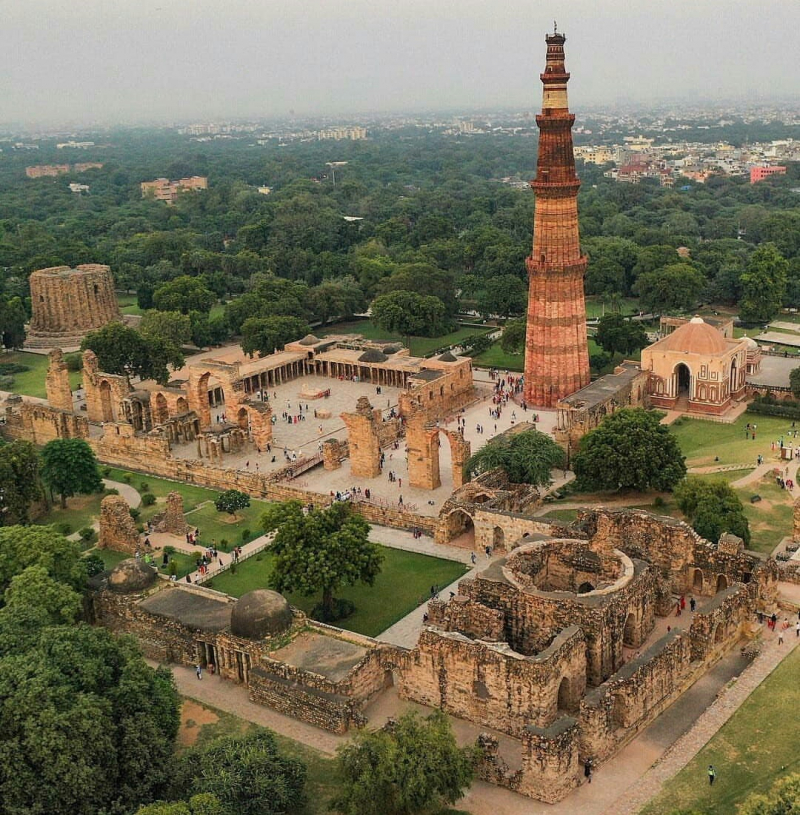Qutub Complex
The Qutb Minar complex in Mehrauli, Delhi, India, has monuments and structures from the Delhi Sultanate. Qutb-ud-din Aibak, who subsequently became the first Sultan of Delhi of the Mamluk dynasty, began construction of the Qutub Minar "victory tower" in the complex, named for the religious figure Sufi Saint Khwaja Qutbuddin Bakhtiar Kaki. It was resumed by his successor Iltutmish, and Firoz Shah Tughlaq, a Sultan of Delhi from the Tughlaq dynasty, finished it much later in 1368 AD.
The Tughlaqs, Alauddin Khalji, and the British were among the monarchs who constructed constructions of the complex. Other monuments in the complex include the Alai Darwaza Gate, the Alai Minar, and the Iron pillar, in addition to the Qutb Minar and the Quwwat ul-Islam Mosque. The first Quwwat ul-Islam Mosque was constructed from the ruins of 27 previous Hindu and Jain temples. The temple pillars were repurposed, and the original images were plastered over. The graves of Iltutmish, Alauddin Khalji, and Imam Zamin are all located inside the compound.
The Archaeological Survey of India has established the nearby region as the Mehrauli Archaeological Park, which has a number of historic structures, including Balban's tomb, and INTACH has restored about 40 of them. It also hosts the annual 'Qutub Festival,' which takes place from November to December and features performances by artists, musicians, and dancers over three days.











